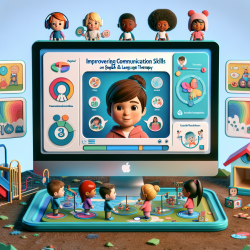Empowering Practitioners: Unlocking the Potential of Youth Sexuality Research
In the realm of speech-language pathology and online therapy services like those provided by TinyEYE, understanding the nuances of youth sexuality can significantly enhance practitioners' ability to support healthy development in children and adolescents. The research article titled "Sexuality (and Lack Thereof) in Adolescence and Early Adulthood: A Review of the Literature" offers valuable insights that can guide practitioners in creating data-driven strategies to foster positive outcomes.
Understanding Youth Sexuality as a Developmental Task
The research highlights a paradigm shift in the understanding of youth sexuality, recognizing it as a developmental task rather than merely a risk factor. This shift encourages practitioners to view sexual development as a normative process that can contribute to overall well-being. By embracing this perspective, practitioners can help adolescents navigate their sexual development in a healthy and informed manner.
Key Findings and Implications for Practitioners
- Timing of Sexual Onset: The research identifies the timing of sexual onset as a critical factor in youth development. Practitioners can use this knowledge to support adolescents in making informed decisions about their sexual health, emphasizing the importance of aligning with peer norms and cultural contexts.
- Gender and Cultural Differences: Understanding the cultural and gender-specific nuances of youth sexuality is essential. Practitioners can tailor their approaches to accommodate these differences, fostering an inclusive environment that respects diverse backgrounds and experiences.
- Role of Romantic Relationships: The research underscores the significance of romantic relationships in youth sexual development. Practitioners can guide adolescents in understanding the interplay between romantic experiences and sexual behaviors, promoting healthy relationship dynamics.
Encouraging Further Research
While the current research provides a comprehensive overview, it also highlights areas that require further exploration. Practitioners are encouraged to engage in ongoing research to deepen their understanding of youth sexuality. This commitment to continuous learning will enable practitioners to remain at the forefront of effective intervention strategies.
Conclusion
By integrating the findings from this research into their practice, speech-language pathologists and online therapy providers can enhance their ability to support adolescents in their sexual development. This data-driven approach not only fosters positive outcomes but also empowers practitioners to create an environment where youth can thrive.
To read the original research paper, please follow this link: Sexuality (and Lack Thereof) in Adolescence and Early Adulthood: A Review of the Literature.










